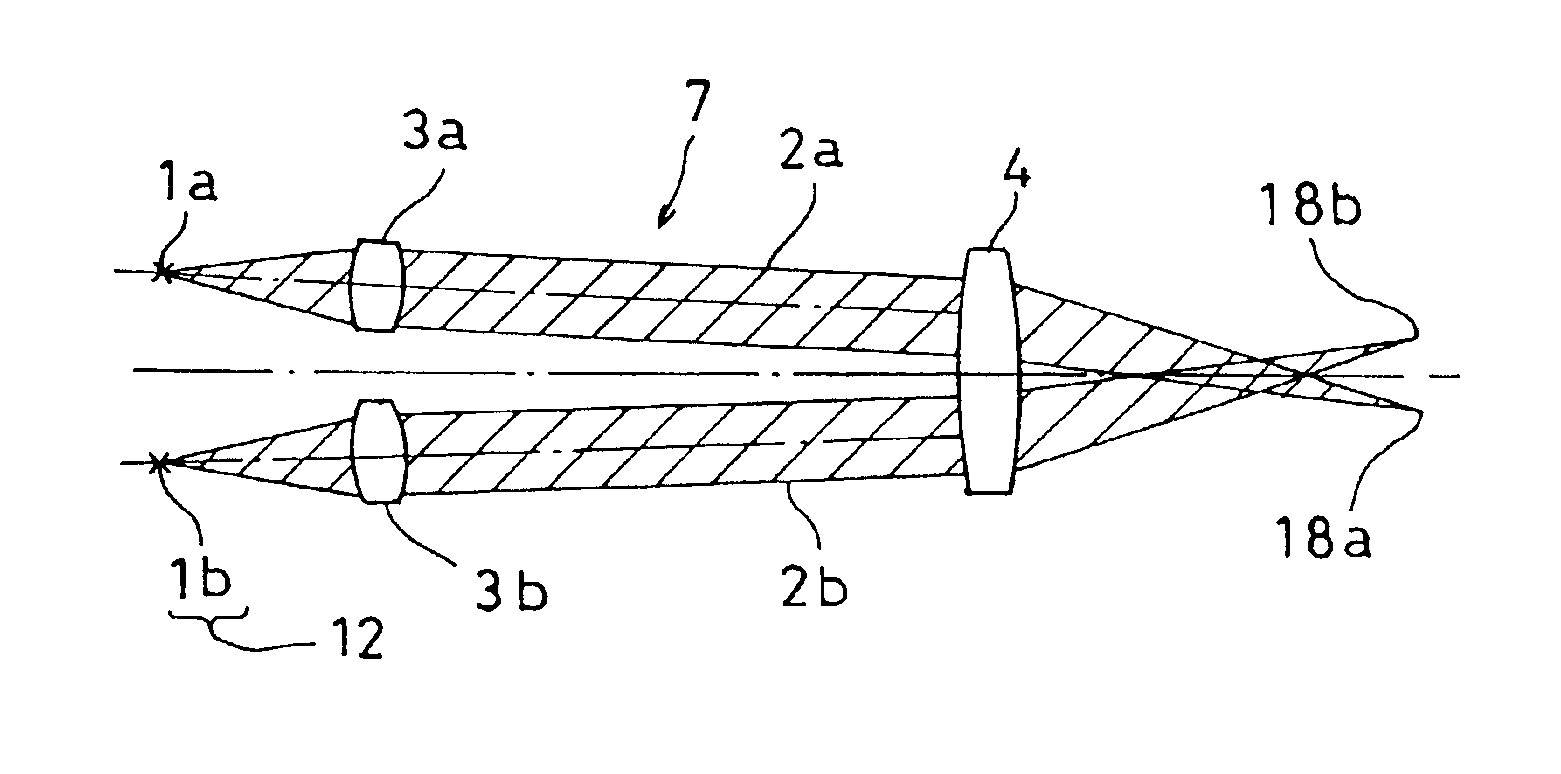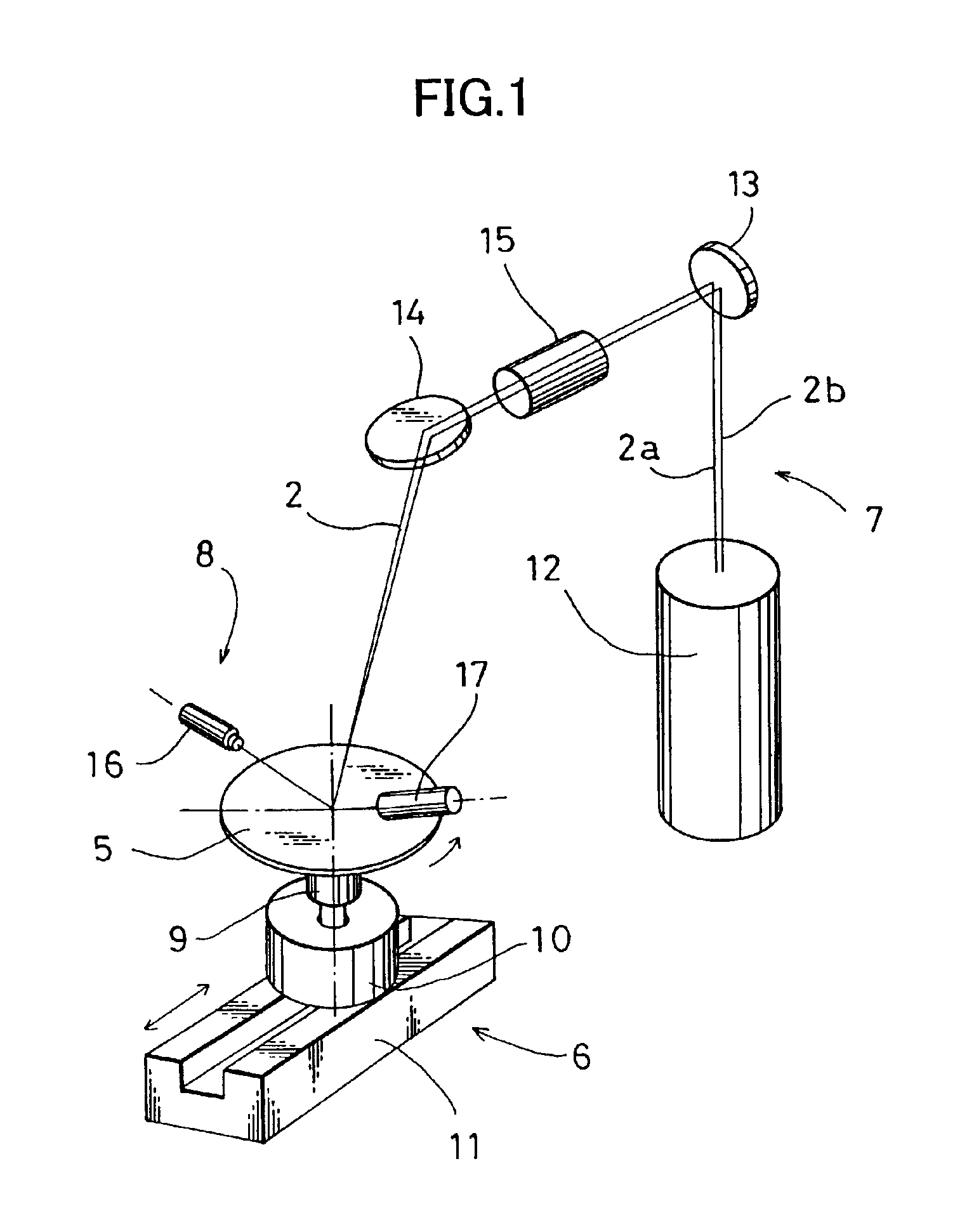Surface inspection system
a surface inspection and system technology, applied in the field of surface inspection systems, can solve the problems of insufficient light amount necessary for the surface inspection system, limitation of the increase of the projected light intensity, and low light emission amount, so as to improve the inspection accuracy, the effect of improving throughput and sufficient projected light intensity
- Summary
- Abstract
- Description
- Claims
- Application Information
AI Technical Summary
Benefits of technology
Problems solved by technology
Method used
Image
Examples
second embodiment
[0061]FIG. 4 shows the present invention where a multiple of light emitting sources 1a, . . . 1n are used.
[0062]It is designed in such manner that collimator lenses 3a, . . . 3n are provided to the light emitting sources 1a, . . . 1n respectively so that laser beams 2a, . . . 2n are projected to a single image forming lens 4 via the collimator lenses 3a, . . . 3n respectively. Optical axes of the collimator lenses 3a, . . . 3n are made parallel to an optical axis of the image forming lens 4.
[0063]In this embodiment, all of the laser beams 2a, . . . 2n are converged to a single projecting point 18. As shown in FIG. 5, the intensity of the projected light at the projecting point 18 is about “n” times as high as the light intensity of a single light emitting source 1. In FIG. 5, light intensity is represented on an axis of ordinate, and space is represented on an axis of abscissa.
[0064]In FIG. 4, a plurality of the light emitting sources 1 are arranged in a single column, while these m...
third embodiment
[0070]In case there are three or more light emitting sources 1 in the third embodiment as described above, the light emitting sources 1 and the collimator lenses 3 should be arranged at positions along a radial line having its center on the optical axis of the image forming lens 4.
fourth embodiment
[0071]Next, FIG. 7 is a drawing to show a fourth embodiment, in which an optical axis of a collimator lens 3 is tilted with respect to the optical axis of the image forming lens 4.
[0072]When the optical axis of the collimator lens 3 is tilted with respect to the optical axis of the image forming lens 4, the projecting point 18 is moved. Therefore, if the optical axis of each of the collimator lenses 3a and 3b is tilted, projecting points 18a and 18b of the light beams from the light emitting sources 1a and 1b are deviated from each other.
[0073]The distribution of light intensity of the projected light at the projecting point 18 under the optical conditions shown in FIG. 8 is turned to the synthesized light intensity distribution of the laser beams 2a and 2b shown in FIG. 9, and it is approximately in trapezoidal form as shown by a solid line in the figure. In this case, if it is assumed that the necessary projected light intensity is I and a pitch of scanning is obtained, it is p′ a...
PUM
 Login to View More
Login to View More Abstract
Description
Claims
Application Information
 Login to View More
Login to View More - R&D
- Intellectual Property
- Life Sciences
- Materials
- Tech Scout
- Unparalleled Data Quality
- Higher Quality Content
- 60% Fewer Hallucinations
Browse by: Latest US Patents, China's latest patents, Technical Efficacy Thesaurus, Application Domain, Technology Topic, Popular Technical Reports.
© 2025 PatSnap. All rights reserved.Legal|Privacy policy|Modern Slavery Act Transparency Statement|Sitemap|About US| Contact US: help@patsnap.com



